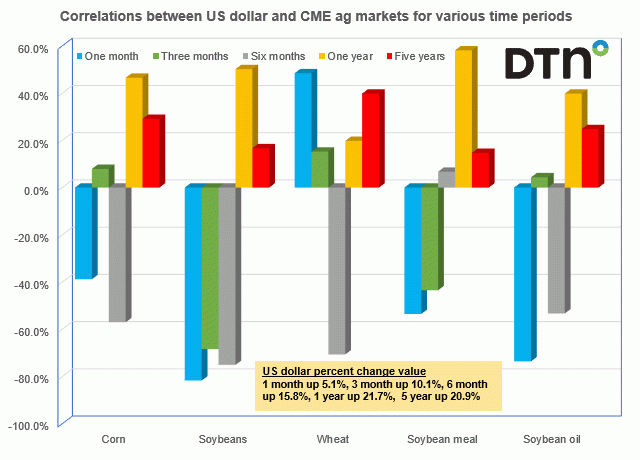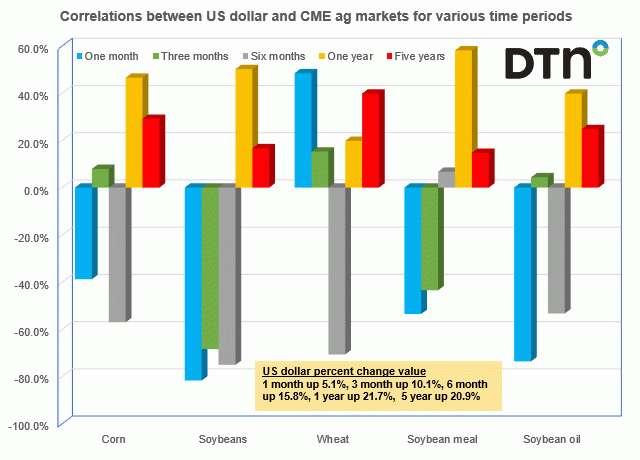Fundamentally Speaking
Correlation Between Dollar vs Grain Values
We have noted in recent blogs the ongoing battle between bullish supply considerations for the grain and oilseeds complex has been more than counterbalanced by ideas of demand destruction.
A series of interest rate hikes by world central banks, including the Federal Reserve Board, sent the dollar soaring and stock and energy markets swooning on ideas that beating down inflation the number one goal even if that means economic pain and recession.
The dollar is appreciating at a rapid clip, up over 2.5% just last week despite dollar selling by the Bank of Japan in almost a futile attempt to support the yen which has fallen to a 24 year low vs the greenback while the British pound has tumbled to an all-time low against the U.S. dollar after the UK Treasury chief pledged a sweeping package of tax cuts fueling concerns about the government's economic policy as the United Kingdom teeters toward recession.
P[L1] D[0x0] M[300x250] OOP[F] ADUNIT[] T[]
This is all good for U.S. travelers heading off to London or Tokyo but creating more headwinds for U.S. grain and oilseed exporters that are already under the gun from increased foreign competition and pared consumption levels from prices still near record highs.
The fact that the dollar is just soaring in forex markets is inherently negative towards upward commodity price appreciation especially for globally traded grain and oilseed markets as most goods measured in dollar terms while often seen that speculative interest in commodities blunted with an appreciating U.S. currency.
Dollar appreciation is just one factor influencing the price of CME ag markets but we thought it would be interesting in light of all the commentary about the surge in the greenback to look at correlation coefficients between grain and soycomplex values vs change in the U.S. dollar index over various time periods.
Interestingly, wheat is the only one that does not have a negative one and three-month correlation as this most internationally traded of grains has often been seen as most sensitive to dollar movements.
Soybeans and soybean meal have the largest negative correlations to the dollar as with corn and soybean oil is also negatively correlated up to six months.
Note all five have positive correlations to the dollar over the one-year and five-year periods suggesting exchange rates have more influence over the shorter as opposed to longer term.
(c) Copyright 2022 DTN, LLC. All rights reserved.






Comments
To comment, please Log In or Join our Community .